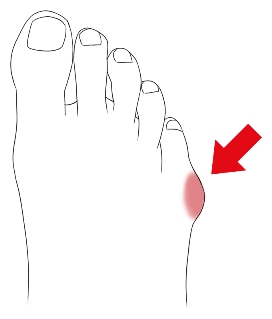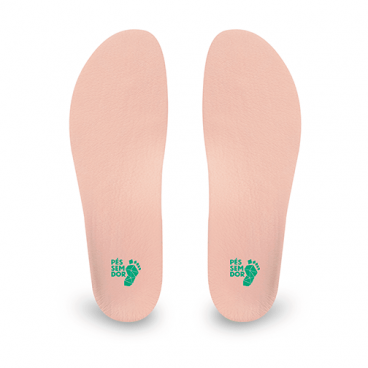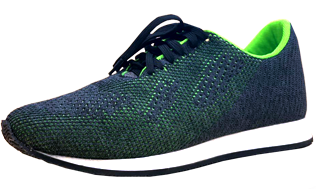Bunionette
The “Bunionette” study explains that a bunionette is a bump on the fifth metatarsal head, the bone in front of the little toe. It is considered a fifth-toe bunion and can be painful if there is friction with shoes and excess load in the region.
The word bunionette means “small bunion”, but this is just one of the names related to this deformity. Denominations such as “Tailor’s Bunion” can also be found. Still, regardless of the name, it is caused by repetitive pressure of the shoe’s lateral edge on the toe, mainly by inadequate footwear. Also, if there is callus and pain at the 5th metatarsal base, a bunionette may be forming.
CAUSES
Bunionette is a progressive pathology, which can be painful when there is friction with shoes. Therefore, the leading cause is inadequate shoes, especially those with narrow tips or heels. The more we wear these shoe types, the faster the disease develops. Other factors can influence the development of the bunionette, such as:
– Pes cavus and/or excessive supination will increase the load on the foot’s lateral;
– Ligamentous laxity increases the susceptibility of deformities and misalignments;
– Anatomical alterations of the fifth metatarsal.
After this, the specialist will start measuring the foot, first by analyzing movement when walking on the baropodometer and stationary (in the 3D scanner). Next, he verifies if there is any difference in length between the feet or legs.

The region affected by bunionette
SIGNS AND SYMPTOMS
Friction with shoes can cause inflammation of the tissues, joint wear, tendon ruptures, and bursitis. All of this can be a source of pain on the toe side, making it challenging to find shoes that don’t bother you. These are some symptoms of bunionette onset:
– Bony protrusion at the base of the little toe, on the outside of the foot;
– Redness, swelling, and intense pain in this region;
PREVENTION AND TREATMENT
Since it is a progressive pathology, the patient must change some habits and start conservative treatment as soon as possible to avoid surgical procedures for correction. The most used treatments are:
– Use of comfortable shoes which are more spacious, such as the Feet Without Pain custom-made shoes;
– Use of protectors and finger separators can help to treat bunionette;
– Specialized physiotherapeutic treatment to relieve symptoms and prevent progression;
– If the deformity is very severe, it may be necessary to limit the time you walk or stand;
– Use Feet Without Pain custom insoles.
FEET WITHOUT PAIN® CUSTOM SHOES AND INSOLES FOR BUNIONETTE
Feet Without Pain custom insoles redistribute pressure on the sole and correct supination, removing excessive strain on the side of the foot, thus preventing the bunionette evolution and improving the aesthetics and foot function.
On the other hand, custom-made shoes perfectly suit each person’s foot anatomy, providing ideal space for the toes without putting pressure on the fifth toe. Therefore, the bunionette does not form.

The custom-made insoles and shoes are made with 3D technology and millimetric digital precision after a free foot, ankle, and knee evaluation with our specialists at one of our branch offices. Check some of their benefits for your feet below:
- Elimination or reduction of pain;
- Injury prevention;
- Increased comfort;
- Perfect fit;
- Standing longer without pain or discomfort;
- Prevention of pathologies progression;
- Improved impact absorption;
- Improved sports performance.

Feet Without Pain Custom Unisex Shoes | You can choose from over 20 men’s and women’s shoe models.
SURGERY
Surgery may be necessary in the most severe cases to correct this protrusion. The doctor will choose the type of procedure. The most common ones are:
The removal of this bony prominence;
Repositioning of the fifth metatarsal.
All surgeries carry complication risks such as infection, impaired wound healing, nerve damage, thrombosis, and pulmonary embolism. In addition, bunionette correction procedures may include the following:
– The return of the bunionette;
– Does not improve or even worsen symptoms;
– Vascular injury (loss of blood supply to the little finger).
TIPS AND CURIOSITIES
Tips to relieve bunionette pain:
– Ice the pain site (roll it up in a towel so that it is not directly applied on the skin), but never more than 20 minutes;
– Choose comfortable shoes daily, with more space for your feet, such as custom-made shoes;
– Avoid continuous use of high heels or narrow-tipped shoes;
– Take medication to relieve symptoms, but only if prescribed by your doctor.
FREQUENTLY ASKED QUESTIONS (FAQs)

It’s fast and easy! Schedule a free evaluation of your feet with our specialists to buy your custom-made shoe.
Call, send a message to WhatsApp at 4003-8883, or visit: www.pessemdor.com.br/agendamento.
How does the evaluation work?
Upon arriving at a Feet Without Pain branch office, you will be received by a foot, ankle, and knee specialist, who will then fill out a registration form and ask some questions about your pain. Next, the assessment of the feet begins.
The specialist will examine your feet to understand your foot pains and complaints. Then, using the high-precision 3D scanner device, the specialist captures your feet’ measurements.
We are the only company with a 3D scanner for designing custom shoes. First, with the measurements of your feet, a mold is created using 3D printers, and after that, we start making your shoe.
How long does it take for the shoes and insoles to be ready?
Feet Without Pain produces custom-made shoes in up to 3 days; then, they are sent to your home free of charge!
Is the evaluation free?
Our assessment is completely free! We perform a complete analysis of your feet and legs, and you pay nothing for it!
Do we accept medical insurance?
We do not work with insurance because our assessment is completely free! But you can check if your plan somehow refunds you regarding the shoes!
EXTERNAL LINKS
1) Bunionette | Foot Education
2) Tailor’s Bunion (Bunionette) | Foot Health Facts




